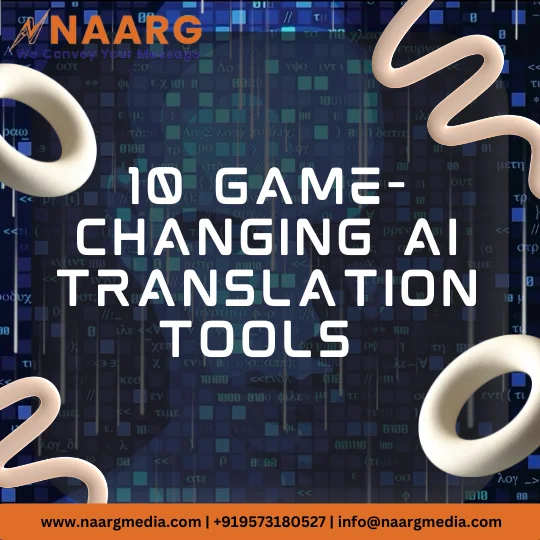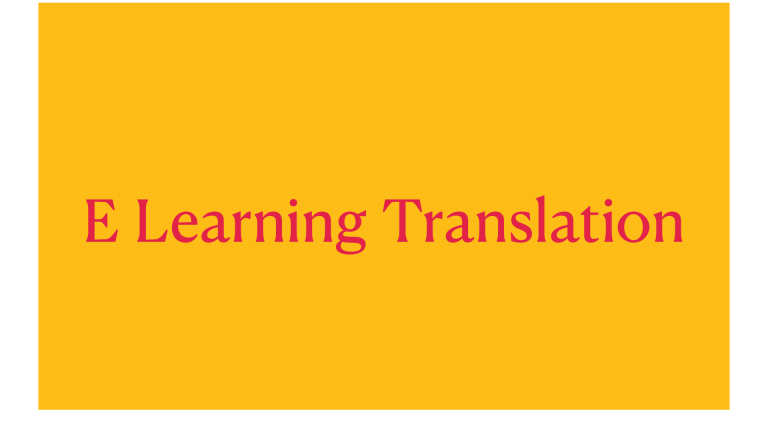The World nowadays is so interconnected that effective communication across language barriers has never been more important. Whether you are a business looking to expand globally, a traveler exploring new destinations, or simply trying to connect with someone from a different culture, translation is a key part of bridging the language gap.
The AI translation tool are causing a stir in the way we communicate as they provide faster, more accurate, and more cost-effective solutions. These tools run on machine translation, natural language processing (NLP), and neural networks, so their potential lies in changing the communication process over the whole world.
This blog will cover how AI translation tool are transforming communication, dive into the technology driving them, overlook several of the best translation tool that you can find today, and catch a glimpse of what will come next in the future of this technological development.

Why Are AI Translation Tools Revolutionizing Communication?
There has always been a language barrier that made communication difficult in situations where people from different linguistic backgrounds had to interact. Before the growth of AI translators, companies and individuals had to use human interpreters, which could be a slow, expensive, and sometimes inaccurate process.
This has been all changed by AI translating machines which have brought in a real-time, scalable, and cost-effective translation accessible to anyone using the internet. Using natural language processing techniques (NLP), and machine translation, AI translation tools can now provide instant translations in over 100 languages, making it easier for humans to communicate without facing the blockade of the language barrier.
AI translation tool are such that you can communicate across borders to foreign customers by sending an email, translating a web page to local markets, or even talking to a person in another language through this technology.
Thus, AI translation makes communication faster and more efficient. Localization ( the adaptation of content to meet the language, culture, and preferences of the target market) is necessary for businesses willing to reach new regions.
By utilizing AI translation tool, companies can perform this at scale and quickly change their content to attract local audiences. Consequently, such a practice becomes more critical as research findings reveal that 72.4% of buyers are more inclined to acquire items with information presented in their native language.
How AI Translation Tools Work
AI translation tools are built on neural networks and deep learning mechanisms that can analyze and understand language. This is done through training the machines on a large amount of text for better recognition of patterns, learning grammar, and understanding the context of any sentence.
Here’s a step-by-step breakdown of how AI translation tools work:
1. Input and Preprocessing
The user provides the text, speech, or images to be translated. The first step the tool takes is the dedication of the source language and then the tool starts to break the text into smaller pieces.
2. Language Models
AI language models, such as GPT-4 and BERT, have been developed with Data from large datasets to be able to understand and generate text.
With these models, the equipment even transmits grammatical rules, word choices, and sentences in many languages.
3. Neural Machine Translation (NMT)
AI translation has been changing the world, and one of the major types of AI translation is Neural Major Technology (NMT). NMT, a concept that came after rule-based translation methods, applies the technique of deep learning to acquire the logic of words and phrases in contexts.
NMT is ultimately the one that proves the translation to be a natural fit and maintains the tone and intent of the original text.
4. Post-Processing
Once the translation is generated, the system will do post-processing to make the translation better by refining it. This is the process where the output is made grammatically correct and contextually proper.
Still, many tools include translation memory ( storing and reusing what has been translated content) as a measure of consistency in a translation work that takes place in many translation projects.
10 Game-Changing AI Translation Tools
There is a wide variety of AI translation software in the market, featuring different functions and advantages. Below is a list of ten game-changing tools that are revolutionizing the translation industry:
1. Google Translate
One of the most widely accepted translation tools globally, Google Translate uses more than 100 languages and offers text, speech, and picture translation.
2. DeepL
Focused on accuracy, DeepL uses advanced neural networks to produce better translations, mostly related to European languages.
3. Microsoft Translator
Microsoft Translator’s interconnectivity with Microsoft Office products places it at the peak of the list for companies with the need for documents, presentations, and translations.
4. Amazon Translate
A scalable translation tool from Amazon Web Services (AWS) is specifically designed for companies and developers who want to implement translations into their applications.
5. Reverso
Besides translations, Reverso also helps students in their grammar as well as in their vocabulary, making it quite useful for language learners.
6. iTranslate
This tool has characteristics including offline translation and voice-to-voice translation, which are quite suitable for travelers.
7. Smartling
Specializes in the localization of websites and apps, thus the localization contains local relevance where content is made for specific markets with cultural backgrounds.
8. Mate Translate
It is a browser extension that instantly translates the text on any web page with just one click.
9. Lingvanex
This tool helps users with speech, text, and image translations and also incorporates speech recognition for voice-to-text translations.
10. Scry AI
Scry AI emphasizes translations that are industry-specific like legal or medical translations and also provides tools specially designed to each of the sectors’ requirements.
Key Features of AI Translation Tools
AI translation tools contain a variety of features that are meant to make the translation process better and more accurate. To begin with, let us highlight the most important features that a translation tool should have:
1. Neural Network-Based Algorithms
These algorithms provide high-quality translations by interpreting the text context and meaning, rather than just translating word-for-word.
2. Speech Recognition
Real-time speech translation makes it possible to communicate with the tool, getting instant translations. This feature is ideally suited for travelers, meetings, or interviews.
3. Translation Memory
Translation memory retains previously translated content, in this way, it ensures consistent translation in multiple languages, so that when you want to work on long-term projects, you can be flexible with borrowing phrases over and over again.
4. Multilingual Support
These AI translation tools not only support several languages, but they also stand as the universal tool for both individuals and the companies they belong to.
5. Customization
Numerous AI translation tools now provide customization options for different fields such as legal, health, or technical.
6. Real-Time Translation
Certain tools can translate live conversations, meetings, and even video calls in the way they are being done, thus giving people of different cultures a chance to communicate in real-time.
The Future of AI Translation Tools
The future of AI translation tools indeed looks promising as technology continues to evolve, making translations more personalized, real-time, and reliable.
Here are a few key trends to watch:
1. Personalization
AI translation tools will soon offer individualized solutions, which means users can change the content and style that they require, such as industry terminology or regional dialects.
2. Voice and Video Translation
More sophisticated voice and video translation functionality will be built to automatically translate speech during video conferencing webinars or live streaming.
3. Cross-Industry Integration
AI translation tools will start to be used for many things, from healthcare, law, and customer service to others.
The professionals who are engaged in communication across language barriers will embrace these devices as they become important parts of their jobs.
AI translation technology has completely changed the way people communicate all around the world. It considerably facilitated the translation of what used to be slower and less clear, as well as made it available to everyone.
The performance of artificial intelligence in translation technologies is further reinforced with advanced language processing. The translation of the video becomes more personal and accuracy in language translation is guaranteed.
By using these tools, businesses can be able to reach the global market much more easily, while at the same time, individuals will be breaking the communication barriers that are brought by the various languages of the world.
Whether used in traveling, learning, or business, AI translation tools have become indispensable components of the digital world of today.
Want to succeed in a multilingual environment? How can AI translation tools transform your communication strategies?
Take a deeper look and join our blog for more such discussions or Contact us to find out how such instruments can widen your presence on the international market. Translate countless languages to be more understandable, one translation at a time!

